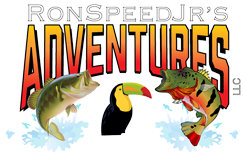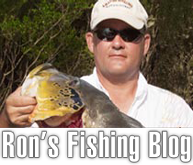 [Editor: this article first appeared on www.ronsfishingblog and may only be used by permission of Ron Speed]
[Editor: this article first appeared on www.ronsfishingblog and may only be used by permission of Ron Speed]
WHY MEXICO FISHING CONCERNS ARE UNFOUNDED
Today I am going to talk about El Salto Lake and its beginning plus once again the safety of traveling to Mexico. These two items seem to be what every American fisherman is interested in talking about. First let’s talk about safety as we continue to hear almost daily about violence in Mexico. Almost daily my friends here in Malakoff ask me if I am not afraid to go to Mexico.
It is just a terrible shame that our news media, state department, and homeland security don’t make things clear that the WHOLE COUNTRY OF MEXICO is NOT unsafe for travel. We can still enjoy the fun times, great climate, and the great warmth of the Mexican people.
The dangerous areas of Mexico are all the border cities where 95% of all the violence is taking place. It’s just a matter of staying away from the dangerous cities. Here is an example of how things work in regard to dangerous areas. Our general manager in Mexico is coming to Dallas with his son and some friends to see the boxing championship. I think it is sometime this month when the two Mexican boxers have their match. I have told Carlos that most of Dallas is pretty safe at night but whatever they do don’t go to South Dallas at any time, day or night. That area of Dallas is very dangerous, especially for a stranger.
Let me tell you another story for perspective. About two months ago, Ron Jr. was helping his son move to a college in North Dallas. Ron Jr. was by himself pulling a trailer and on the way home he had to pass through a part of South Dallas. Ron Jr. had a flat on the trailer and pulled off the main highway into the parking lot of a grocery story to change the tire. He noticed at least a dozen guys standing in the parking lot who appeared to be “crack heads.” Within 5 minutes, 4 of them came over to check him out. They insisted he let them help him for a small fee. They got pretty upset when he told them he didn’t need help and he didn’t have any money. When they walked away, he called the Dallas police department on his cell and explained the situation. The police department said they would send someone. Ron Jr. went back to getting the tire off the trailer, but then here the guys come again, demanding money from him. Ronnie picked up a jack handle and told the leader he would crack his head open if he came close to him. The 4 guys kept coming and just before they jumped him the squad car arrived and the bad guys left running. The officer told him he was very lucky and if he ever had another flat in that part of the city to not stop and try and fix the flat… just keep going on the flat tire. The point being you don’t have to travel to Mexico to find bad guys. Just know where the dangerous areas are in any city in the world and just don’t visit those areas.
In my opinion, travel to 95% of Mexico is just the same as it has been for the past 50 years: SAFE!
Ron Jr. is today fishing at El Salto and staying at the camp. My turn to be at the camp comes next month. Don’t think for one minute I would allow my son to travel to Mexico if I didn’t know it was safe. I am in my forty-first year of fishing Mexico. There is no one that knows Mexico better than I do as I have been all over the entire country over these 40 years. The border area has ALWAYS been an unsafe place to visit, at least in my lifetime as almost all the bad guys migrate to this area to fleece the rich Americans crossing the Rio Grande River. The only difference now is that the drug gangs are having a big-time battle over drug territory, just like we had here in the 1930s when Al Capone, Dutch Schultz, Myer Lansky and others were fighting over territory during prohibition. Was it safe to travel to Illinois–and most of Chicago–back then? Of course it was!
Today, it’s the Sinaloa cartel fighting another drug cartel over territory. Most of the killings have been in the city of Juarez across from El Paso. DONT TRAVEL TO JUAREZ TODAY AS IT IS THE MOST DANGEROUS CITY IN THE WORLD. Also, I would not advise Americans to drive into the states that border the USA. Our clients fly commercial flights to Mazatlan’s international airport and are shuttled to the El Salto camp on a busy four-lane highway.
In regard to travel to fish El Salto, nothing has changed since the lake opened in 1994 and it is still a great place to visit.
If that discussion doesn’t dispel any lingering doubts, please feel free to call us to discuss your concerns.
WHY OUR EL SALTO BASS FISHING IS THE BEST EVER
Now let’s talk about our newest fishing packages at Salto, as they are the best packages we have ever offered in my 40 years in the business with the absolute lowest prices. There are now 5 promoters who are selling trips to El Salto and 3 of the camps are in a price war which is great news for American fishermen.
We know that without a doubt we have the very best price, best location, best service, best boats, of anyone operating on El Salto. These are not just words to use against our competition but are just the facts. I will challenge anyone to compare our great packages item-by-item and say we don’t have the very best operation.
Lets take a look at a few things.
1.TV in every one of the rooms in the new houses.
2. Free massage
3. Free Cuban cigars
4. Express bass boats
5. $795 per person in low season
6. Outdoor bar with TV
7. Boats ONE minute from your room
8. Indoor aquarium filled with big bass from the lake
9. Free satellite phone
10. Big front porches with rockers overlooking the lake
11. Open bar
12. Free ice cream available 24/7
Our nearest competitor price-wise is $200 per person higher than our price. They are not even on the water but 15 to 20 minutes away from the lake. The camp is located close to cattle pens giving off a bad odor and supplying a good supply of flies. The rooms are small and cramped. Most of their clients don’t know in advance that they are not staying on the water.
That’s just comparing one operation, but we welcome anyone to compare our Salto operation with anyone operating on the lake.
I am enclosing some photos of our Salto operation from the very beginning many years ago as it is now and you can see how far we have come and how great it is now.
Denny Brauer, the famous pro Fishermen, just left our camp and I urge you to look in testimonials on our site to see what Denny had to say about the trip.
GOOD LUCK WITH YOUR FISHING & DONT FORGET TO WEAR THAT LIFEJACKET!!!!!



